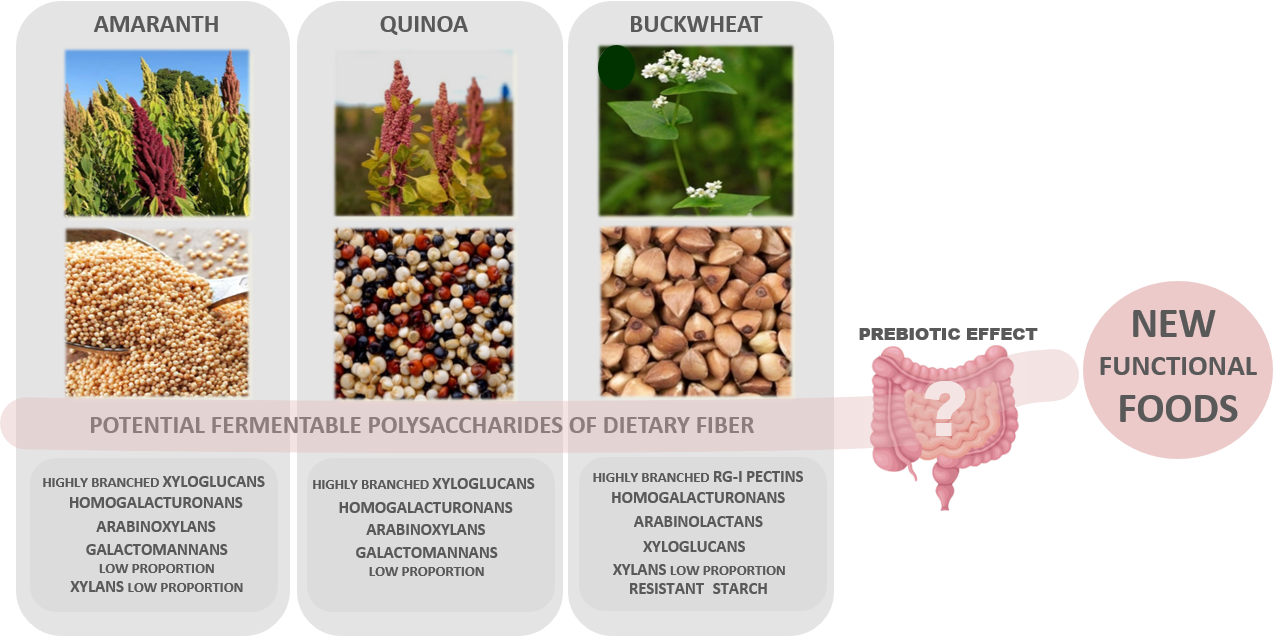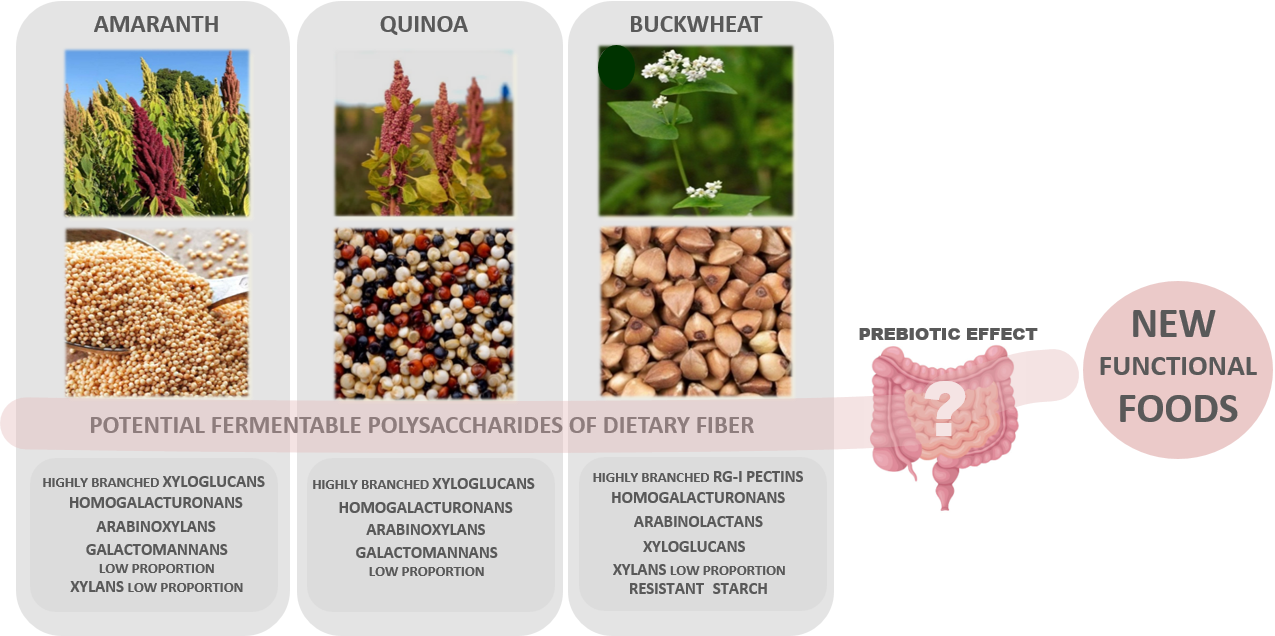Pseudocereals dietary fiber. Amaranth, quinoa, and buckwheat fiber composition and potential prebiotic effect
DOI:
https://doi.org/10.48162/rev.39.146Palabras clave:
Pseudocereales, Fibra Dietaria, Efecto Prebiótico, MicrobiotaResumen

Amaranth (Amaranthus), buckwheat (Fagopyrum esculentum), and quinoa (Chenopodium quinoa) crops have limited production and agro-industrial development both in Argentina and globally. As the demand for functional ingredients and foods grows, developing products from these pseudocereals could offer substantial economic benefits. This study aims to analyze the dietary fiber content and composition of amaranth, quinoa, and buckwheat, and to investigate the relationship between dietary fiber structure and its potential prebiotic effects. Gaining insights into these aspects would provide valuable information for developing foods based on these pseudocereals and could enhance their future applications in the food industry.
Highlights:
- Pseudocereals have TDF levels similar to wheat, with varying fiber compositions.
- Amaranth and quinoa have high IDF/SDF ratios, close to the ideal 3:1 balance.
- Studies reveal pseudocereal fiber boosts beneficial microbes and SCFA production.
- Pseudocereals offer evidenced prebiotic benefits but need more research for validation.
- Amaranth, quinoa, and buckwheat are promising functional food ingredients.

Descargas
Publicado
Número
Sección
Licencia
Derechos de autor 2018 Revista de la Facultad de Ciencias Agrarias UNCuyo

Esta obra está bajo una licencia internacional Creative Commons Reconocimiento-NoComercial-CompartirIgual 3.0.
Aquellos autores/as que tengan publicaciones con esta revista, aceptan las Políticas Editoriales.


